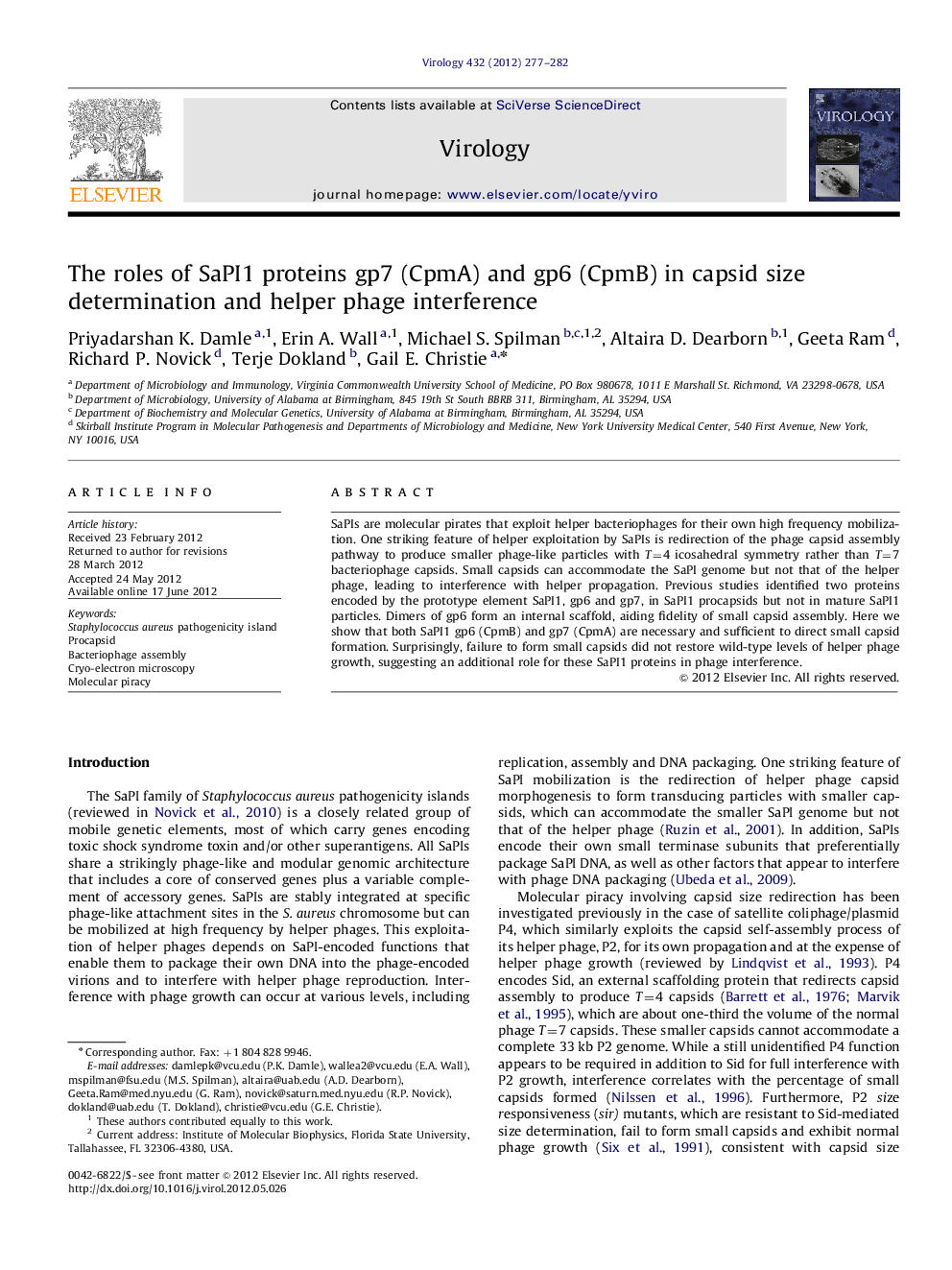| Article ID | Journal | Published Year | Pages | File Type |
|---|---|---|---|---|
| 3424415 | Virology | 2012 | 6 Pages |
SaPIs are molecular pirates that exploit helper bacteriophages for their own high frequency mobilization. One striking feature of helper exploitation by SaPIs is redirection of the phage capsid assembly pathway to produce smaller phage-like particles with T=4 icosahedral symmetry rather than T=7 bacteriophage capsids. Small capsids can accommodate the SaPI genome but not that of the helper phage, leading to interference with helper propagation. Previous studies identified two proteins encoded by the prototype element SaPI1, gp6 and gp7, in SaPI1 procapsids but not in mature SaPI1 particles. Dimers of gp6 form an internal scaffold, aiding fidelity of small capsid assembly. Here we show that both SaPI1 gp6 (CpmB) and gp7 (CpmA) are necessary and sufficient to direct small capsid formation. Surprisingly, failure to form small capsids did not restore wild-type levels of helper phage growth, suggesting an additional role for these SaPI1 proteins in phage interference.
► Requirements for helper phage 80α capsid size redirection by SaPI1 were determined. ► SaPI1 CpmA and CpmB are necessary and sufficient for small capsid formation. ► CpmA and CpmB are also required for SaPI1 interference with 80α growth. ► Unexpectedly, SaPI1 interferes even in the absence of small capsid formation.
